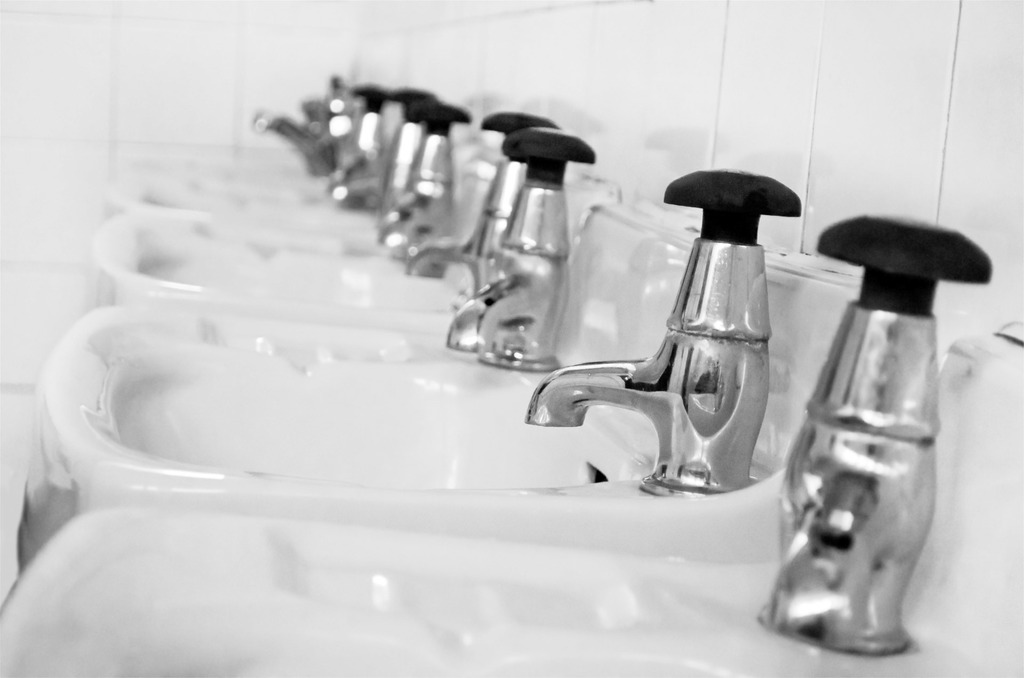
Kelly Rose
Editor

Kelly Rose
Editor
Every water system is susceptible to Legionella outbreaks if not properly monitored and managed. Paul Wilson explains what you need to know about Legionella and mitigating the risk.
LEGIONELLOSIS, MORE commonly known as Legionnaires' disease in its most serious form is a type of pneumonia that can be fatal. The disease spawns from Legionella bacteria which can thrive in man-made water systems and can be difficult to detect. The disease takes its name from the outbreak in which it was first identified at the annual American Legion Convention in 1976. Sadly, that outbreak claimed 29 lives. Given that there have already been 110 confirmed Legionella cases recorded between 1 January and the end of May this year in the UK alone, an estimate of the number of lives Legionella has claimed since it was first identified would be staggeringly high.
Throughout the developed world, governments have put regulations in place to ensure that Legionella risk is managed, but the number of outbreaks continues to rise. Earlier this year, 32 Legionella cases, including two fatalities, were linked to a poorly maintained open cooling system at the Port of Ghent, while sources of ongoing cases in the US states of New Jersey and Ohio are yet to be identified.
Here in the UK, there are specific Codes of Practice that those responsible for any type of building or facility must follow, and for good reason. Legionella can breed in both hot and cold water systems in any building type. But the responsibility of those managing buildings and facilities extends beyond the fabric to the care of the staff, tenants and visitors within the walls of their premises.
Once contaminated water droplets become airborne through an aerosol or spray (commonly seen from poorly managed open cooling systems), the bacterium can be carried further than you might imagine. One case in the late 1990s resulted in the death of a driver who contracted the disease by inhaling airborne Legionella contaminated water droplets while driving approximately one mile away from the site where the contamination had occurred.
The risk is very real and those in charge of buildings and facilities must take the necessary precautions to control this risk. However, it’s not exactly easy to detect the symptoms of a poorly managed water system that encourages Legionella growth.
Better understanding
There are defined Codes of Practice to help understand how to measure and control the Legionella risk. The Health and Safety Executive (HSE), a UK government agency, has issued Approved Codes of Practice (ACoP) including L8 which outline the recommended requirements for the effective control of Legionella bacteria in water systems. A set of guidelines entitled HSG 274 outline exactly what needs to be done in practical terms to comply with L8 for various types of water system.
For buildings and facilities used in hospitals and healthcare, the Codes of Practice are noticeably tougher. Hospital patients including elderly and immunosuppressed patients are among the most susceptible to infection from Legionella bacteria and must therefore be given greater protection (healthy children are rarely infected). Healthcare facilities under inadequate control sadly result in the death of many patients who contract Legionnaires’ disease whilst in care. Healthcare organisations are therefore required to adhere to the Department of Health’s HTM 04-01 guidance covering safe water in healthcare premises.
While these Codes of Practice clearly outline what is required in terms of Legionella assessment and control, building or facility managers that require additional guidance, or simply lack the time and resource to implement the recommended measures, should seek out a risk assessment consultant that has the relevant expertise to ensure they are taking the right preventative measures and operating to full compliance.
Essential assessments
The first step in controlling the risk is assessing your water system. HSG 274 identifies three areas that should be subjected to risk assessment and these are; evaporative cooling systems, hot and cold water systems, and any other water system that poses a risk – namely any system that produces airborne water droplets.
A comprehensive assessment should include the inspection of obsolete pipework (dead ends) or dead legs such as piping to unused or little used taps where water can stagnate and encourage the growth of Legionella bacteria. Remedial action should then take place to remove any dead ends from the water system, and flush or remove any dead legs, eliminating the opportunity for water to stagnate and encourage bacteriological growth.
Inappropriate material used in jointing are another common area where Legionella bacteria can breed. Natural rubber, hemp, linseed oil-based jointing compounds and fibre washers are notorious for capturing and storing bacteria and as a remedial action, these should be replaced with safer alternatives that do not encourage the growth of bacteria.
Flexible hoses made from ethylene propylene diene monomer (EPDM) rubber are known to increase the likelihood of bacteria contamination. This is because EPDM can support the growth of Legionella microorganisms. While hoses constructed with EPDM are outlawed in most healthcare environments, they can often be found in water systems in other sectors. As part of the remedial action to manage the Legionella threat, these can and should be replaced by hoses (or fixed pipework) manufactured from alternative materials.
Major assets must also be inspected to mitigate the threat. From cold storage tanks to calorifiers (hot water heaters) and evaporative cooling systems, major assets must be inspected for scale, corrosion, bio-fouling and sediment which are all warning signs that Legionella bacteria may be present in the system. Remedial action to reduce risk should include the cleaning and disinfection of these major assets.
A comprehensive programme
Legionella risk assessments must be carried out by a competent individual who is confident that they have a full understanding of the relevant Codes of Practice. While your building or facility management might make every effort to ensure full safety and compliance, assigning the responsibility to an under-qualified individual can result in non-compliance and an un-safe water system.
In many cases, building and facility managers will outsource the responsibility of risk assessment and remedial action to an experienced water treatment provider. When searching for an experienced provider it’s important to ensure you’re being offered more than a one-size-fits-all solution and that the provider can instead tailor a bespoke risk assessment and risk management solution to your specific business and its individual requirements.
Each building or facility will have its own site-specific risks and it’s essential that your water treatment provider recognises these risks and builds a program around them. By utilising the expertise of qualified and experienced risk assessment experts, buildings and facilities across the UK can take control over the growing risk of Legionella in their water systems.
Paul Wilson is head of SafeCare, the consultancy division of Clearwater Technology. Fore more information, visit www.clearwater.eu.com/safecare


1 Archipelago
Lyon Way
Frimley
Camberley
GU16 7ER
UNITED KINGDOM
01276 21155